|
|
| Download the leaflet  In July 2019 Norfolk Wildlife Trust carried out a survey of the plants on the Common.  You can download the list here. For the place of acid heathland and the history and management of Hoe Common in the wider context of commons in Norfolk, see Tom Williamsonís The Landscapes of Common Land, History and Ecology in Norfolk and Beyond, Oxbow Books, 2025. ISBN: 9781914427336 |
 The twelve acres of what is now known as Hoe Common were enclosed as a Poor's Charity in 1811, by Act of Parliament, out of a much larger area of uncultivated land, shown on Faden's 1797 map of the county extending as far as the House of Industry in Gressenhall. The County Wildlife Site on Hoe Rough is also part of this old common, and is probably where the filly in the next item was grazing, close to the mill. [Reproduced by courtesy of Andrew Mcnair.] 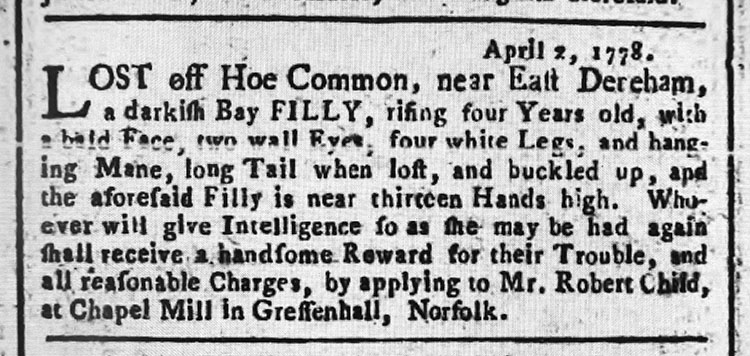 The miller had his horse stolen from the Common. Norfolk Chronicle 18th April 1778 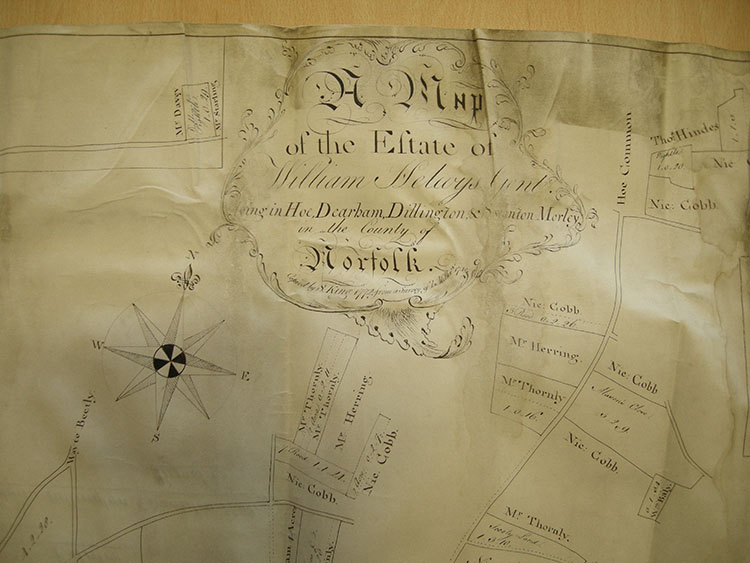 The map of William Helwys's estate in Hoe, dated 1772, shows the pre-enclosure Common beginning opposite the end of Ayers Lane (top right). [Courtesy of Norfolk Record Office CHC 11901] 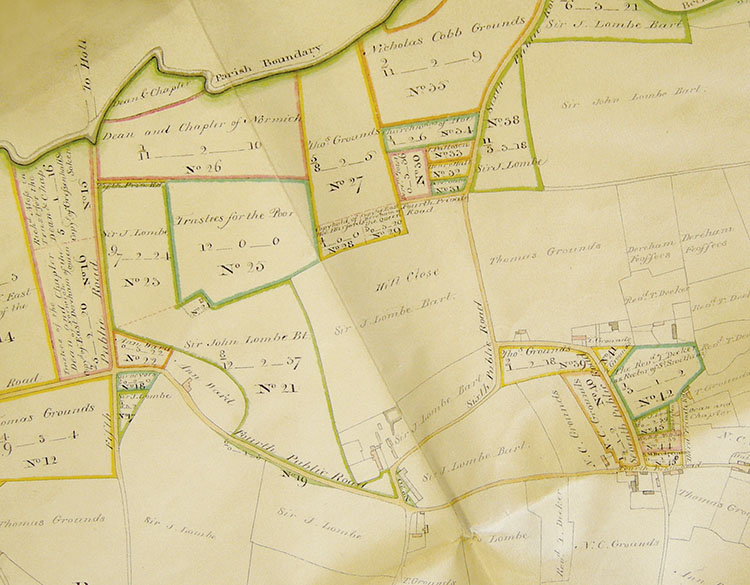 Detail of the map of the Enclosure Act of 1811. The Poor's Allotment is marked Trustees for the Poor. The little bite out of the south west corner was a tiny plot containing a cottage, probably an encroachment on the old common. Its owner, Richard Mitchell, had commoner's rights and was awarded land elsewhere in the village in exchange for giving up these rights. Sir John Lombe of Bylaugh Hall, Lord of the Manor, acquired Mitchell's land. [Courtesy of Norfolk Record Office C/Sca/2/243]  The same area on the tithe map of 1847. Plot 16 is the Poor's Allotment.  The Tithe assessment describes it as a Fuel Allotment awarded to the Trustees of the Poor. The Trustees were the Lord of the Manor, the Vicar and Churchwardens and the Overseers of the Poor. [Courtesy of Norfolk Record Office BR/276/1/119]] 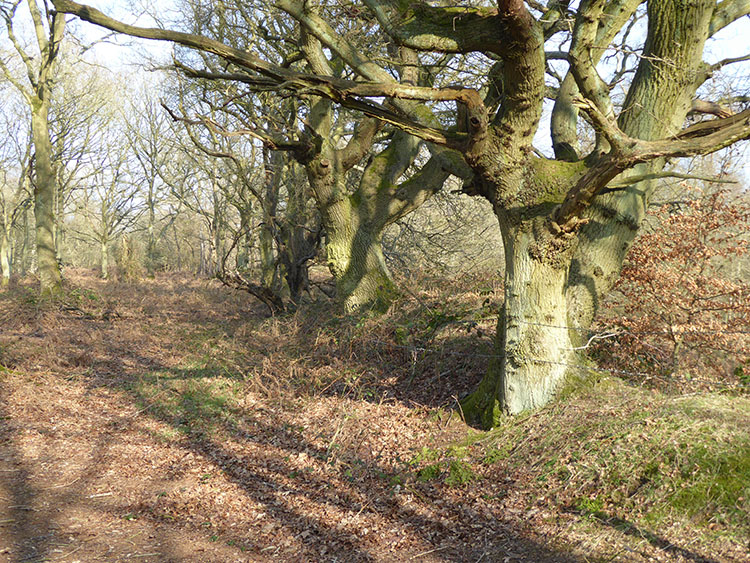 These pollarded oaks line the bank on the southern edge of the Common, a traditional way of marking a boundary. 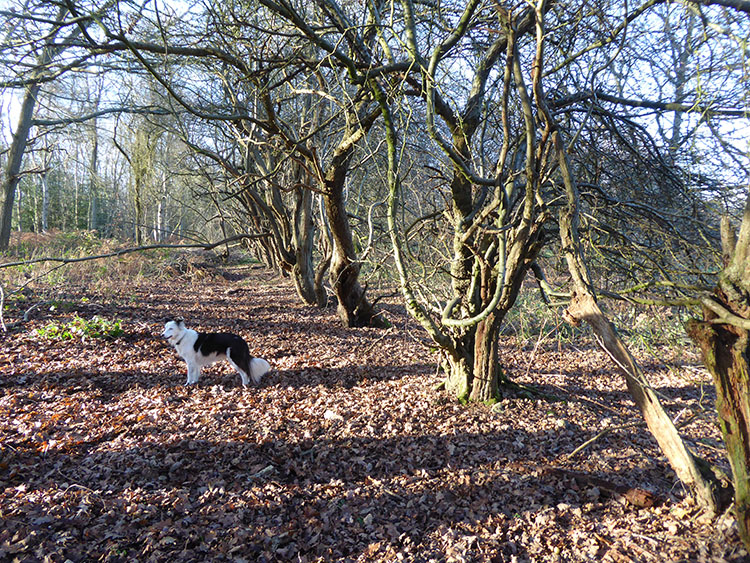 The northern boundary hedge contains a considerable amount of crab apple amongst the hawthorn. 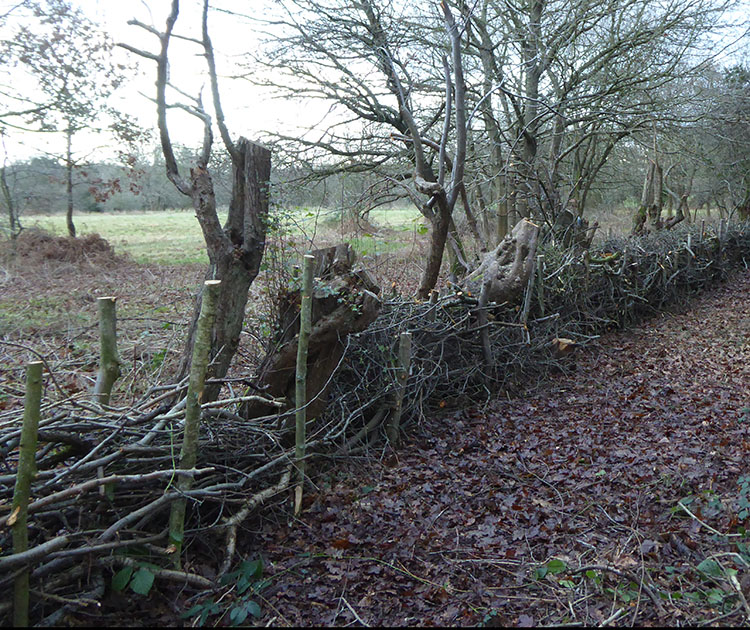 Some of the hedgerow trees have now been pollarded to stimulate regrowth and the brash used to make a dead hedge. This improves the boundary of the Common and saves the waste having to be burnt.  An aerial photograph taken by the RAF in 1946 shows that there were hardly any trees at all on the Common then. The network of practice trenches thought to have been dug during WWI stands out clearly. In the years following, because bracken and gorse were no longer cut for animal bedding and fuel, a large part of the Common became overgrown and woodland has developed all round the perimeter. [Copyright Norfolk County Council; photo by RAF 31 January 1946] 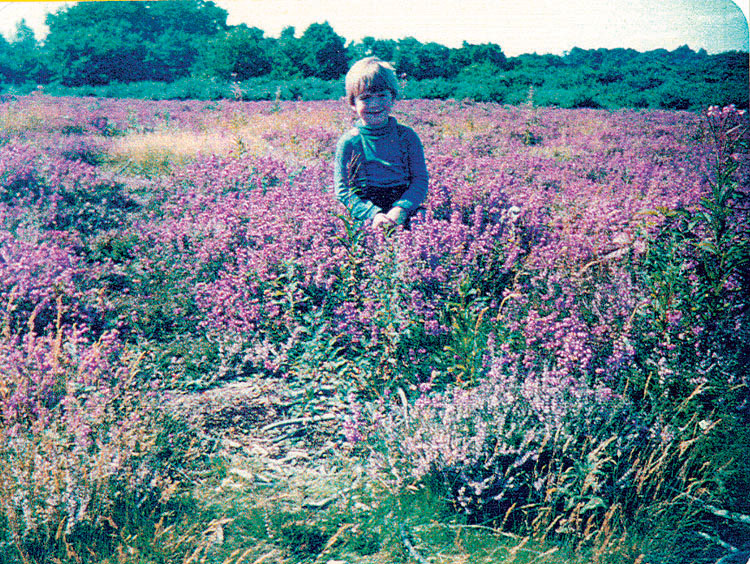 Heather in bloom on the Common on 1982. A fire a year or two earlier had cleared the area of gorse. A few years later the area was overgrown again.  Clearing gorse in the 1990s. Robin Goolden (Wensum Valley Project), Dick Malt, Julia Masson (Project Officer for the Wensum Valley Project) and Eilean McGibbon.  In 1990 a successful evening of fund raising for the Common was held at the Angel, with a showing of Leaving Lily, a WWI story filmed partly in Hoe by Graham Baker who was living at the Angel when the film was made in 1978. Hoe Hall is one of the locations used in the story. 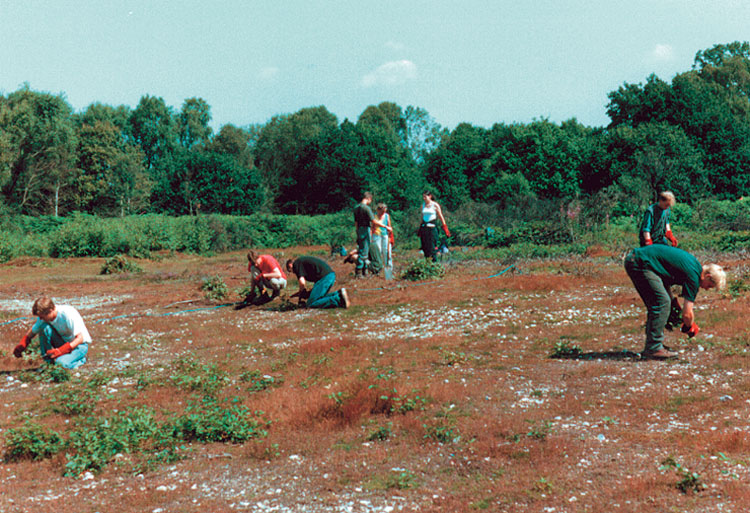 An area of bracken was cleared and the soil scraped off. Heather seed from Roydon Common in Norfolk was sown and grew strongly. Here, volunteers from the British Trust for Conservation Volunteers are removing young brambles, gorse and birch from the area.  Richard Dalton, Farm Manager at the
Richard Dalton, Farm Manager at the Norfolk Rural Life Museum, Gressenhall, hauling logs off the Common with one of the Museum's Suffolk Punches, 1996. 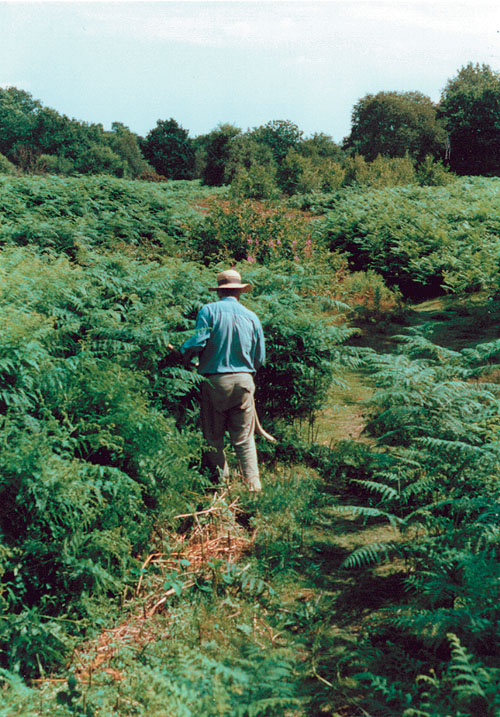 Robin Goolden scything in the forest of
Robin Goolden scything in the forest of bracken to keep a path open. 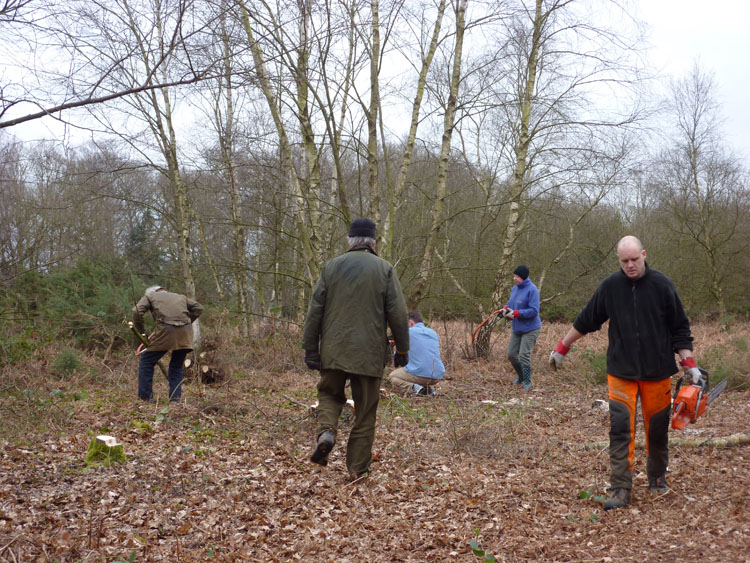 In February 2013 work began preparing a new area from which bracken will be removed to allow heather to regrow. Neil Chadwick of the Hawk & Owl Trust, Sculthorpe, wielding the chainsaw, with local volunteers. 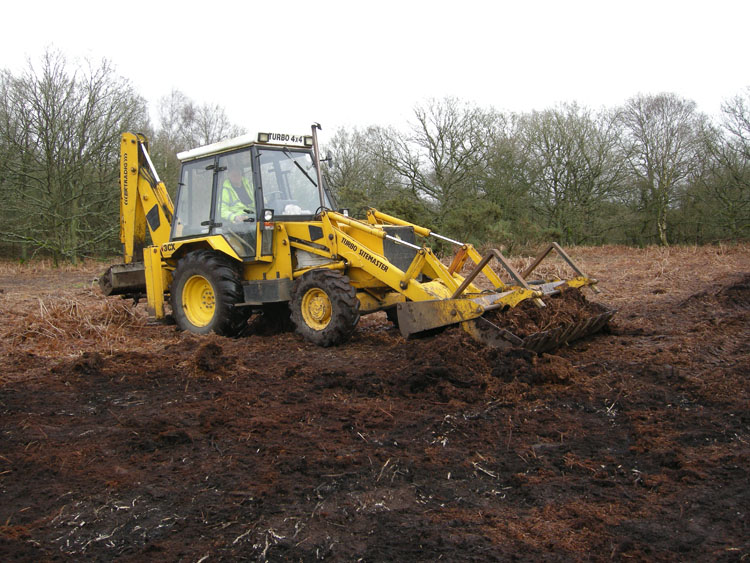 Scraping the bracken litter off down to the soil below allows heather to regrow from dormant seed. Anton Crisp cleared two large areas in February 2014.  Stumps of birch trees have been ground out to make maintenance easier in future. Stephan Ludkin's machine makes short work of it. March 2014. 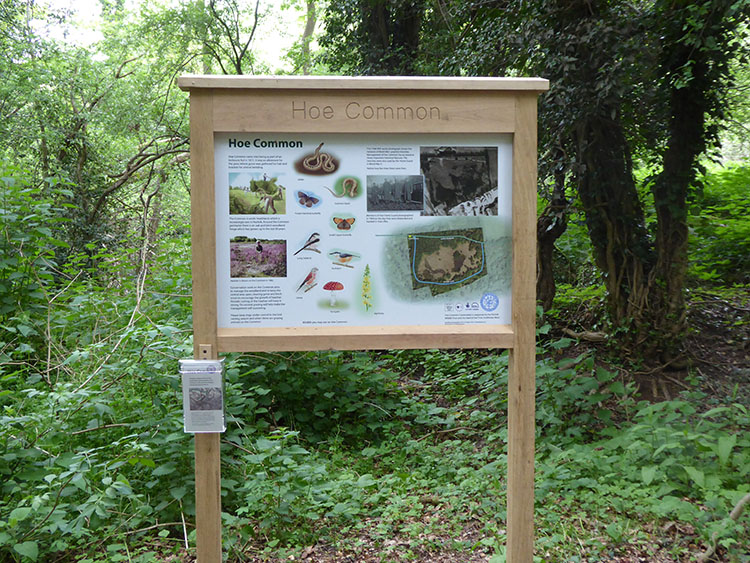 Two interpretation panels with leaflet holders were put up in 2015 to explain the Common's history, ecological value and the current conservation work to visitors. The panels were funded with Heritage Lottery money through the Hawk & Owl Trust, and Breckland District Council gave a grant for the leaflets. 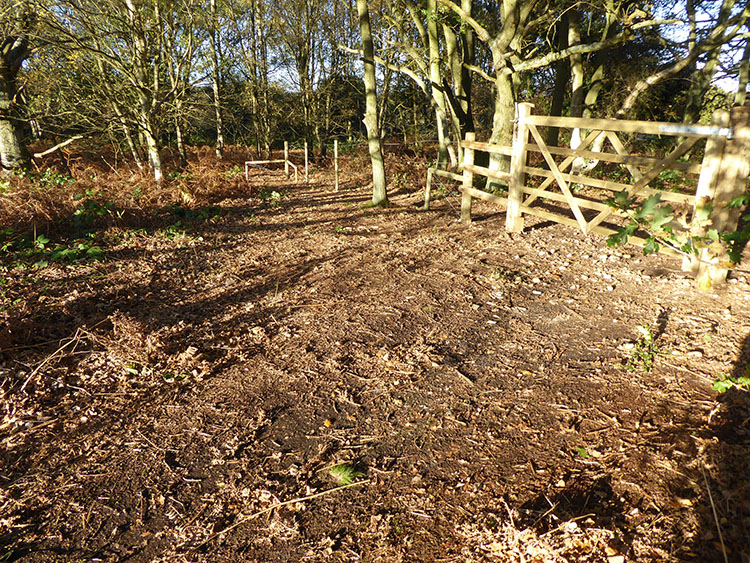 In Autumn 2015 work began fencing the central area to allow periodic grazing. Students from the agricultural college at Easton installed the gates and fencing as part of their practical training sessions. In 2022 two Norfolk Horn ewes from the flock at the Hawk & Owl Trust's Sculthorpe Moor Reserve were turned onto the Common as an experiment to see if they would thrive and what effect they would have by grazing. Despite the unusually hot and dry summer the sheep did well. A team of local volunteers checked them daily. It is hoped to try a larger number in 2023. Norfolk Horn are a very old breed traditionally used on rough grazing, now finding a new role in conservation. See http://www.norfolkhornsheep.co.uk/breed-history/ 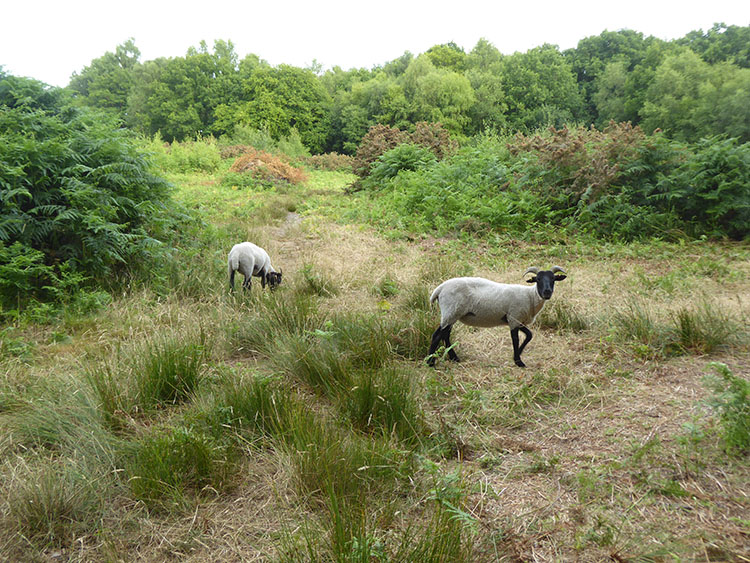  Five Herdwick ewes coped well with the cold in January 2023 and returned for a longer stay in the Spring.  Explanatory notices informed the public of the grazing project and the need to protect the animals.  Jeff Shea and his Suffolk Punch, Alex, rolling bracken, Summer 2016. Breaking the stems of bracken repeatedly helps to weaken it and keep it under control. Conservation work on the Common continues to encourage the regrowth of heather by the removal of bracken and invading trees. If you are interested in the programme, please email [email protected]  This aerial photo, taken using a drone in July 2017, shows the areas of flattened bracken and the heather coming into flower (purplish-brown patches). In the centre are the trenches where the roller can't be used. 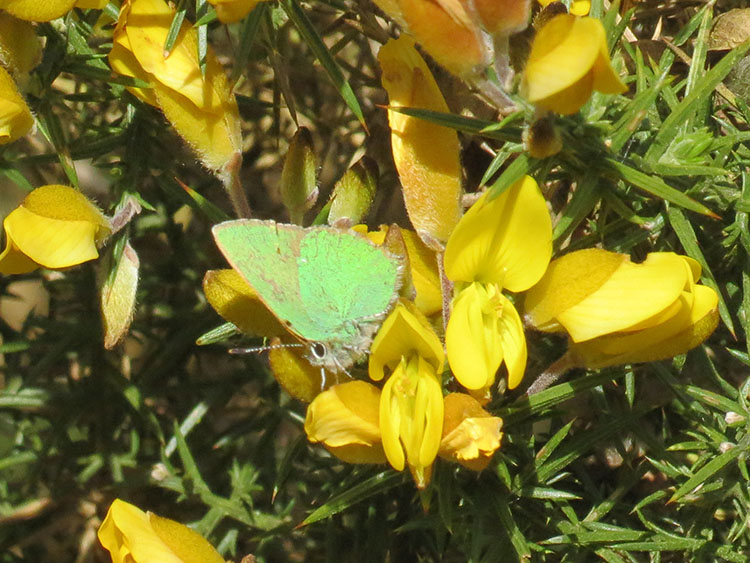 Green hairstreak butterfly, 17 May 2015: this scarce butterfly feeds on gorse and broom. It is important not to think that heather is the only plant that should be encouraged. 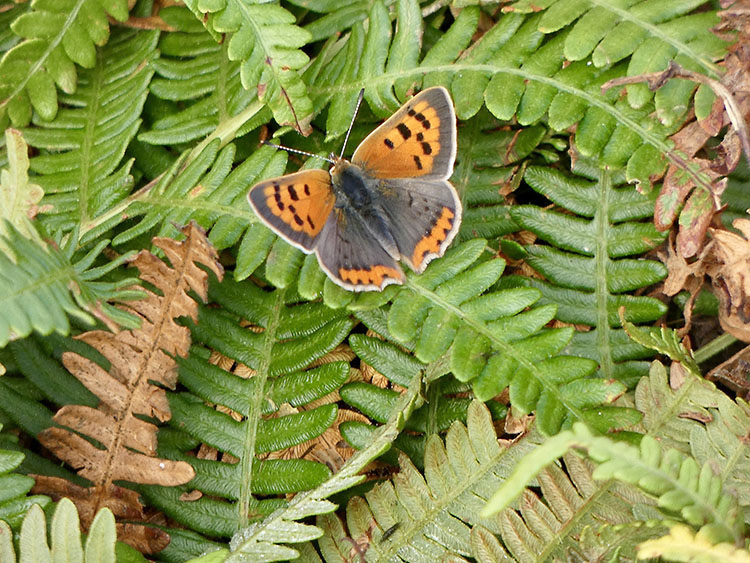 Small Copper butterfly.  White
Admiral butterflies like oak woodland and
brambles.
 Green tiger beetle Cicindela campestris 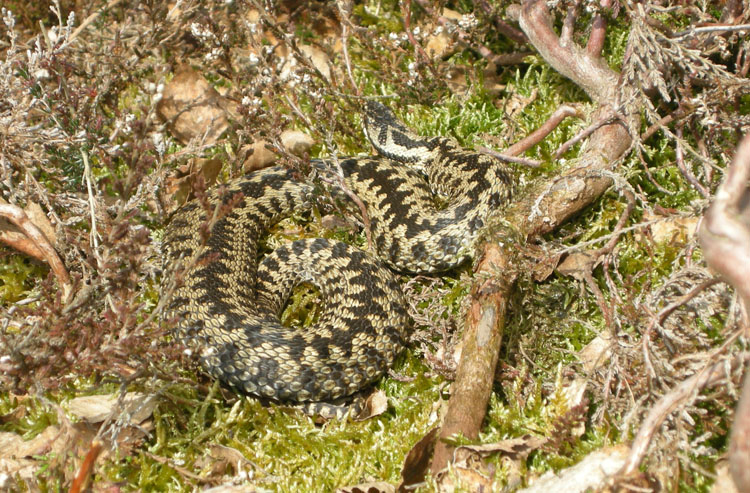 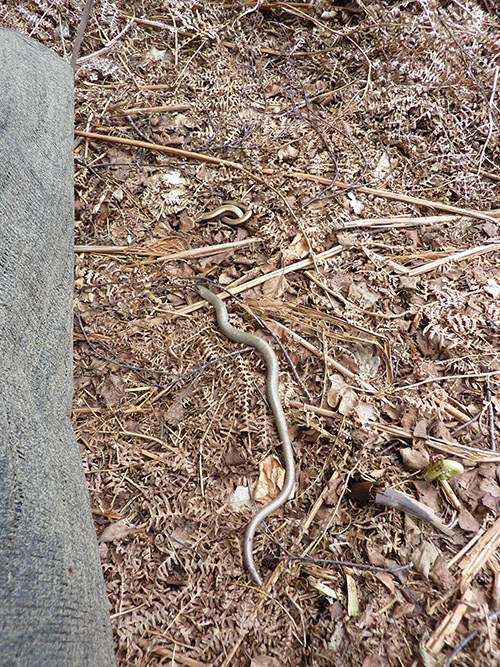 Adders, slow worms and lizards are
Adders, slow worms and lizards are among the animals which live on the Common. The first sighting of a grass snake was made in August 2023. 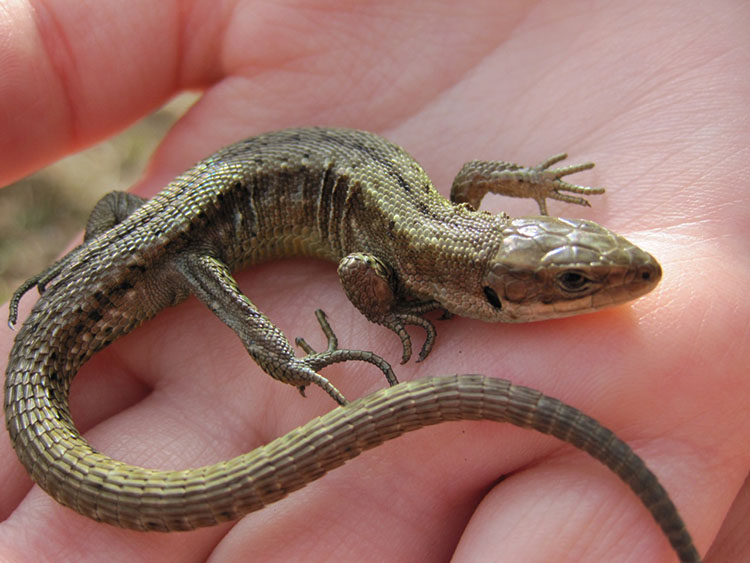 Common lizard.  Common darter. 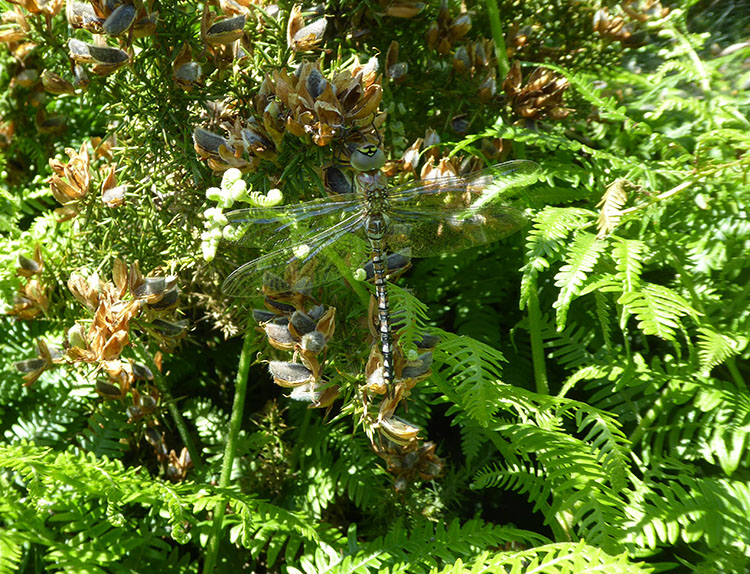 Migrant hawker.  Black-tailed skimmer. 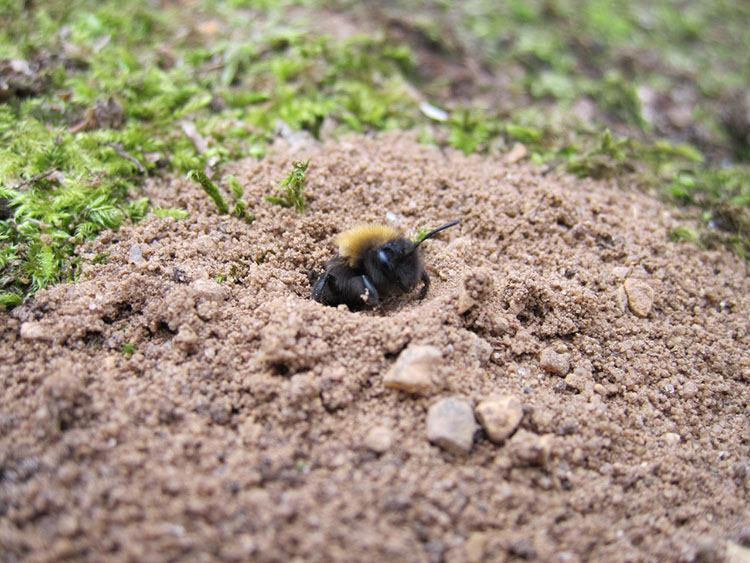 Buff-tailed Bumble Bee. 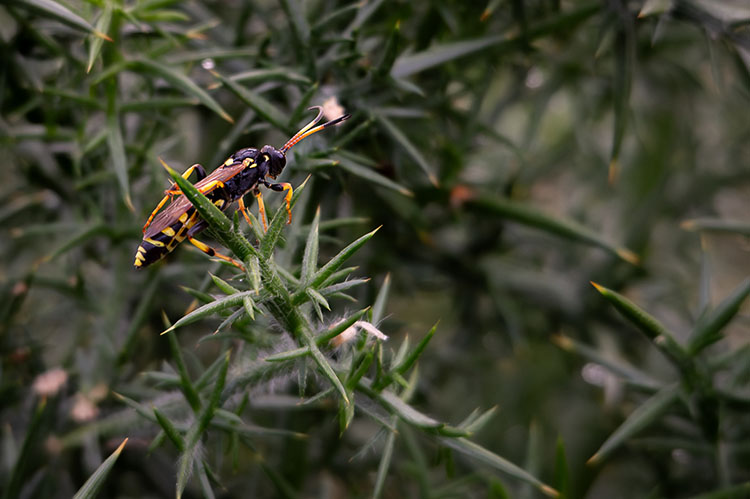 A parasitic wasp, possibly Ichneumon sarcitorius.  Labyrinth spider in its funnel-shaped web in heather. 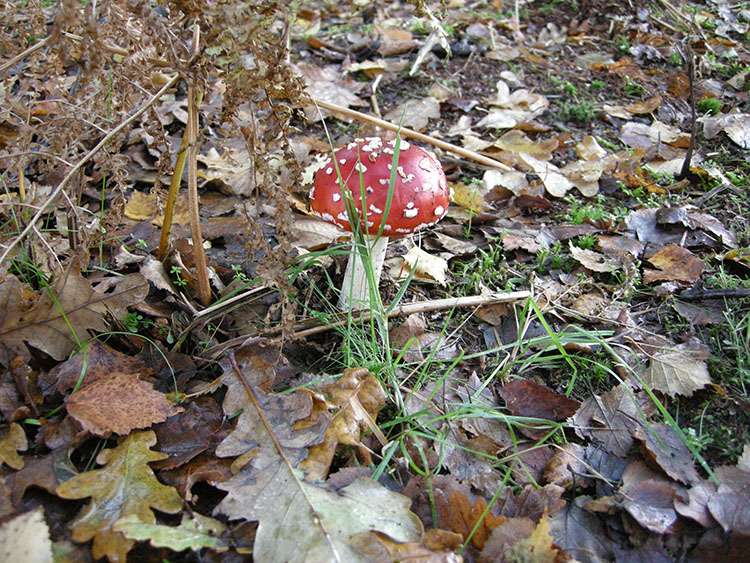 In autumn there are fungi in plenty on the common. This is a fly agaric, easy to spot with its brightly coloured cap. Red for danger!  Small bracket fungus on a birch log in December.  Jelly-like fungus Tremella mesenterica on an oak branch.  Sarcoscyphus coccinea 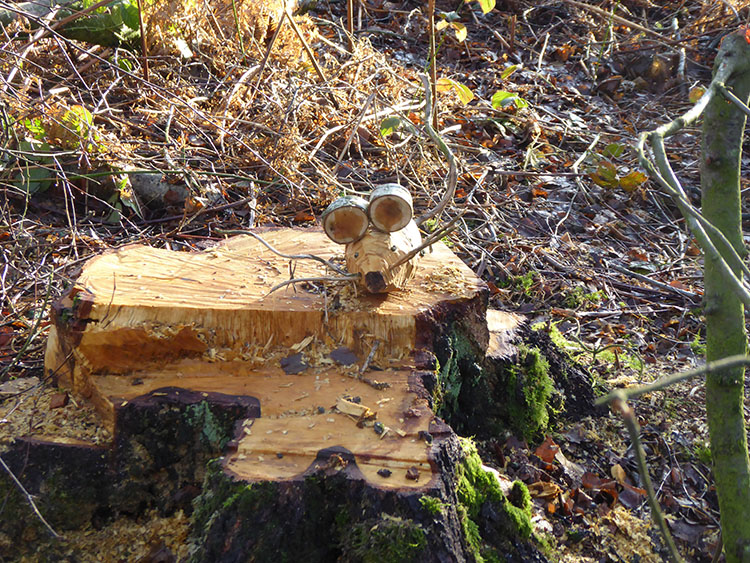 There have been a couple of sightings this winter of the extremely rare Silver Birch Mouse (Mus flackii). It pays to keep your eyes open! 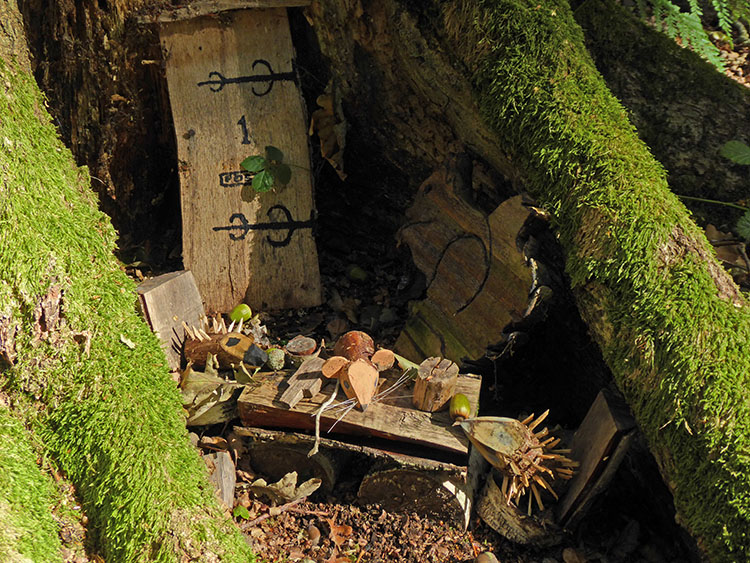 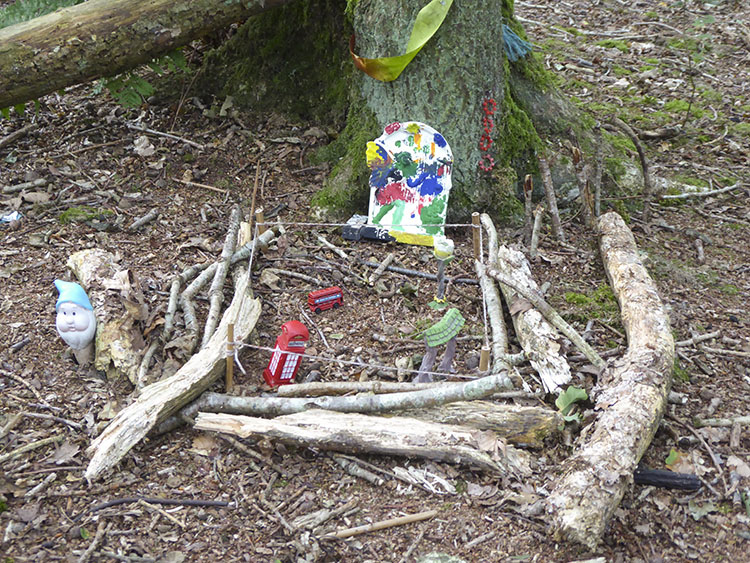 The little people are always up to something in the woodland. Hoe Bird Walk The first Hoe Bird Walk took place in February 1984. It was the brainchild of Peter Cawley, a Committee member of the Mid Norfolk Group of the Norfolk Wildlife Trust. Peter led the Walk for the next two years. Now, in 2017, some thirty-three years and six walk leaders later, it is still going strong, meeting on the third Sunday of every month come rain, sun and even snow. The impressive bird species list is currently 135 with three new birds 2015. And what new birds! A Velvet Scoter, Red Kite and Gannet. Unbelievable on a small parcel of land in mid Norfolk. There have been many changes in those thirty-two years. Land-ownerships, gravel workings and the railway have all had an effect on the wildlife. The one stable element is the loyalty of the supporters who turn out each month, year on year, bringing their knowledge and birdwatching skills, amassing the species total we have today.  Willow warbler, 17 April 2016 Hoe Rough 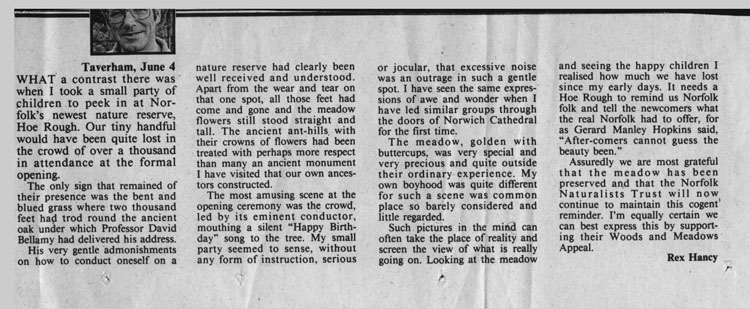 In 1989, Hoe Rough was acquired by the Norfolk Naturalists Trust (now NWT) from Philip Sayer, who lived at the villa known as The Rough, on the corner of Gorgate Road and Fakenham Road. Rex Hancy wrote the nature column in the Eastern Daily Press for many years.  The nature reserve was opened in May 1989 by Dr David Bellamy. His audience was mainly made up of children from the local young naturalists' group, Watch. The photograph is a still from a 16mm film made of the event by Dereham photographer Michael Burton and is reproduced with permission.  This oak on the Rough could well be
This oak on the Rough could well be Hoe's oldest tree. The trunk is about eighteen feet (5.5 metres) round which may mean it is 300-350 years old. 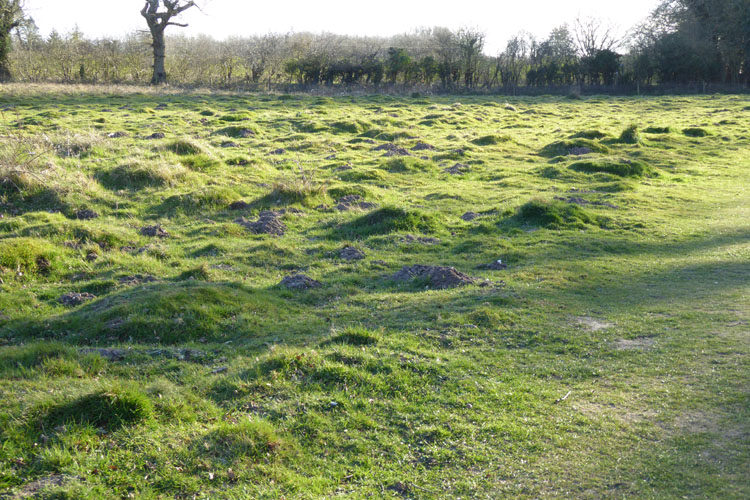 The ancient anthills are a striking feature of the Rough. More information on the Rough and adjacent Beetley Meadows is available on the website of the Norfolk Wildlife Trust. https://www.norfolkwildlifetrust.org.uk/wildlife-in-norfolk/nature-reserves/reserves/hoe-rough |
|